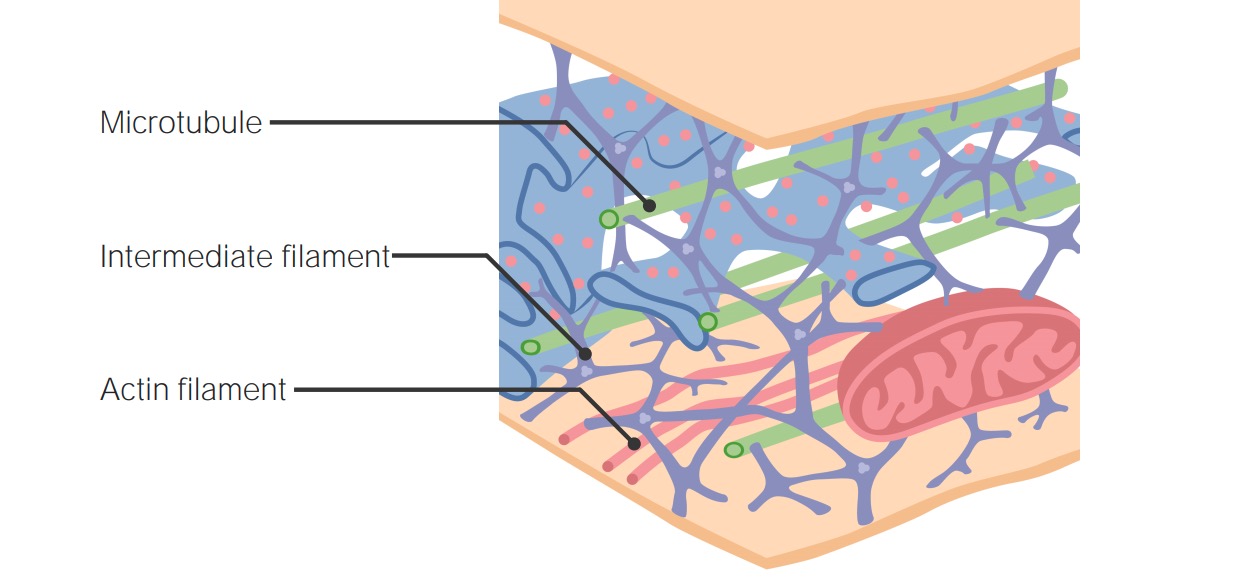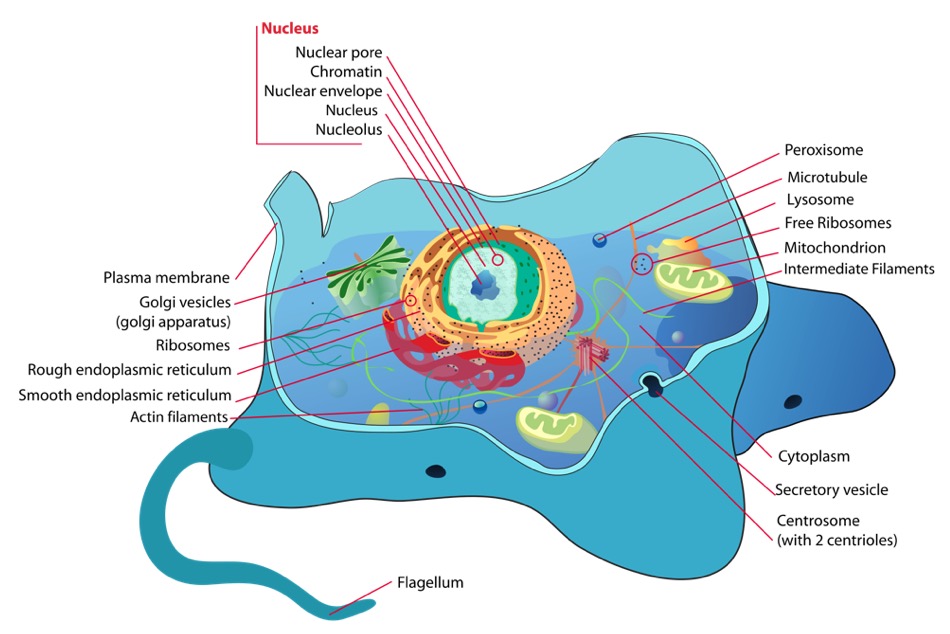Playlist
Show Playlist
Hide Playlist
Cellular Structure: Introduction
-
Slides 06 CellularStructure CellBiology.pdf
-
Reference List Molecular and Cell Biology.pdf
-
Download Lecture Overview
00:00 Hello and welcome to our lecture on structure and function. Here we'll be exploring cell organelles. 00:09 Now that we have a great understanding of how macromolecules are built, let's put them together a bit and explore how organelles come together to make the cell. 00:19 By the end of this lecture, you should have a great understanding of the nucleus and the nuclear pores as well as the endomembrane system which is involved in transport of materials from the cell. 00:31 In addition to that, you'll have an understanding of how eukaryotic cells perhaps became so much more complex than prokaryotic cells. 00:41 So as we move forward, let's begin by looking at one question, how big is a mitochondria? Going back to the question of scale that we look at earlier in the course, mitochondria are quite small. 00:55 In fact, they are small enough that we can barely see them inside the cell looking in a light microscope. 01:02 If we look at our larger cell, the human egg cell, we could see that fairly clearly under a microscope and we may be able to see the mitochondria inside that cell. 01:14 So moving forward that gives us just a little bit of scale, so that we can review again how much larger an eukaryotic cell is than a prokaryotic cell. It's about ten times larger. 01:28 Because it's ten times larger, it needs to have a little bit more complexity and localization of functions in different organelles so that the right materials are in the right place to accomplish the right task at the right time. 01:40 So, we'll notice that there's a lot of compartmentalization. The nucleus, for example, contains all of the linear chromosomes. 01:47 And we have many organelles inside the cell such as our mitochondria, the power house of the cell. 01:54 In this lecture, we're going to explore the roles of each of these different organelles. 02:00 So as for compartmentalization, we have two distinct regions to think of or two distinct reasons that compartmentalization is possible inside the cell. 02:12 First of all, this endomembrane system, it all arises from the phospholipid bilayer membranes. 02:18 And phospholipid bilayer membranes seemed to be folded in from the external membrane or perhaps even arose from internal membranes because these internal membranes often produce the phospholipids for the external cell membrane. So the endomembrane system is one division that we'll explore. 02:37 And then there are other membrane bound organelles inside the cell. 02:42 We will specifically be paying attention to mitochondria because we're focusing on animal cells However, plant cells also have membrane bound organelles in the form of chloroplasts. 02:54 In addition to these complex compartments, the eukaryotic cell needs a little bit more structure. 03:02 So it has a cytoskeleton. Much like our own skeleton, the cytoskeleton gives the cell structure and support, in addition to allowing the cell to transport materials throughout. 03:15 Imagine a neuron, we have a cell body up here by the spine and it needs to make its way all the way down to the tips of our toes. 03:23 How do we get materials from the cell body up here all the way down to the tips of our toes? Well we have to have some mechanisms of transport. 03:31 So as we move forward, we'll begin to take a look into how this cytoskeleton helps in this transport mechanism.
About the Lecture
The lecture Cellular Structure: Introduction by Georgina Cornwall, PhD is from the course Cellular Structure.
Included Quiz Questions
Which of the following comparisons between eukaryotic and prokaryotic cells is NOT correct?
- Eukaryotic cells are simpler in structure and function compared with prokaryotic cells.
- Membrane-bound organelles are a unique feature of eukaryotic cells, whereas prokaryotic cells lack them.
- Eukaryotic cells contain multiple linear chromosomes, whereas prokaryotic cells contain a single, circular chromosome.
- Eukaryotic chromosomes are enclosed in a membrane-bound nucleus; however, in prokaryotes, the nuclear material is not membrane-bound and is present in the center as the nucleoid.
- Eukaryotic cells are ten times larger than prokaryotic cells.
Which of the following is NOT a compartment of an animal cell?
- Chloroplast
- Mitochondrion
- Cytoskeleton
- Nucleus
- Endomembrane system
Customer reviews
5,0 of 5 stars
| 5 Stars |
|
2 |
| 4 Stars |
|
0 |
| 3 Stars |
|
0 |
| 2 Stars |
|
0 |
| 1 Star |
|
0 |
Very good teaching. Very good images and very good explanation.
I love the visuals, her method of speaking and the transcript at the end







